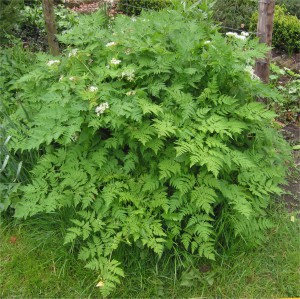In medieval medical books, Kervel is often found as a medicinal plant. It was recommended in the treatment of ulcers, pain in side, colds, headaches, disorder 
Cerwel is not additive, put up with a half. The soil is practically suitable for any, but on fertile, lungs and moistened greens, of course, is abundant and more comfortable. The distance between the plants is about 20 cm, and in rows - 35. In addition to a separate bed, it can be distinguished by a place in the rivers of other vegetable crops, given its relatively short, about 2 months, the growing season.
Sitting lead early in the spring, and then repeat several times, because, firstly, Kervel is quickly stuck and fastened, and secondly, the outlet is usually removed completely in one time, since in the cut he is poorly growing. In the middle of summer, especially if it is roast, serving stop: renew in August to have commercial and consumer products in the fall, when it turns out the highest quality. Buckets that did not have time to form enough, leave in the soil until spring, adding them to the suspension sowing.
Kervel has two varieties - curly and smooth. The plant is early and quickly forms the trunk, and use better young greens in fresh form before flowering. By smell resembles a parsley, a little fennel and anise, only the flavor is more gentle and more pleasant. Leaf, especially the lower, steals on the ground, the bush is miniature and elegant. Cervel is used in salads, they are squeezed with the first and second dishes, they decorate chicken broth and the scrambled eggs, they harvest the future - dried and canned.
Cervel can be grown and seedl. It is not bad in greenhouses and on the windowsill in the residential premises. Cervel in everyday life is often confused with a batup.
Chervil
Comments leave a comment
 Start a discussion ...
Start a discussion ...












